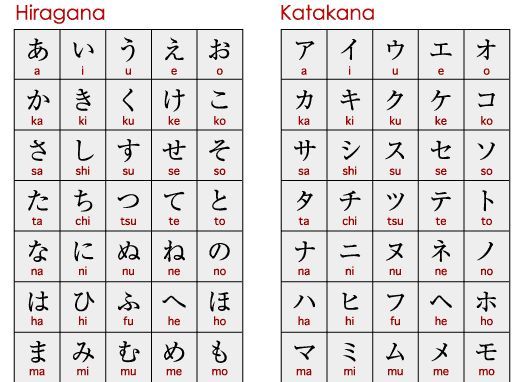The Japanese economy currently ranks as the world’s 3rd largest economy. As a tech-savvy nation with fast and high internet penetration, along with a high smartphone ownership rate, the Japanese ecommerce market is a vibrant and lucrative one for both domestic and foreign ecommerce merchants.
But the Japanese market in general is one of the most challenging markets for foreign businesses of any kind to enter. We’ll show you how you can have a chance of making it in Japan’s ecommerce market through quality translations provided by translation services.
We’ll also go over the importance of localization and how to localize for the Japanese market to find further success and relevance among Japanese ecommerce buyers.
What’s So Special About the Japanese Ecommerce Market?
The size of its ecommerce market is ranked 4th in the world with revenues exceeding $90 billion in 2019 as reported by Statista. The top ecommerce marketplaces in Japan are Amazon Japan, Rakuten, and Yahoo Japan. As mentioned in the beginning, the country boasts high internet penetration. In tandem with the Japanese’s strong consumer culture, the country definitely has a strong ecommerce market and the numbers don’t lie.
Be that as it may, Japan still has plenty of room to grow, particularly in mobile e-commerce sales. Compared to China for example, China’s ecommerce transactions are mainly done on smartphones. But for Japan, there’s opportunities for domestic and foreign ecommerce merchants if they provide mobile app support now as mobile sales increase in the near future. While this does not matter if you’re listing on their marketplaces, it will for those who are looking to sell directly from their own ecommerce business websites.
Why Japanese Is a Hard Language to Translate
For native English speakers, the Japanese language is one of the hardest languages to learn. Get to know in detail the nuances of the Japanese language that makes English to Japanese translation particularly difficult. This info is also useful for those who are learning Japanese or those who are looking to learn Japanese. It’s not impossible as there are many Japanese language learners in the world who have mastered Japanese, but the language and its confusing rules takes a while getting used to.
1. Japanese is a Contex-Heavy Language
The bane of many Japanese language-learners who are just starting out is that the language is highly contextual. This means that subjects are deliberately omitted in many Japanese sentences, be it in writing or orally. You would have to analyze the situation’s context for you to make any sense of what is happening. For English speakers, it would feel awkward and unnatural at first since English naturally incorporates subjects to form complete sentences. But the Japanese’s strong emphasis towards context reflects their highly-contextual culture that prizes collectivism. As to how this translates to their linguistic habits (pun intended), the Japanese typically avoid confrontational sentences and resort instead to vague sentences.
2. Alien Grammar Rules
Unlike English and many of the world’s major languages, Japanese does not have plural nouns and verbs. Compared to romance languages i.e. Spanish, French, Italian, etc., Japanese does not have gender identifiers. Owing to its highly contextual language, this presents more obstacles for Japanese translators considering some sentences already have subjects omitted.
All in all, it’s really hard to know who is committing an action and the objects they are committing the action upon unless you’re aware of the entire context. A Japanese to English translator would have to read in between the lines and wholly understand the context and culture before finalizing a specific English translation. Google translations won’t cut it.
3. Confusing Sentence Order
The Japanese language’s sentence order is characterized mainly as SOV (Subject-Object-Verb) while English’s word order is SVO (Subject-Verb-Object). Let’s take ‘I ate an apple’ as an example. The SOV word order would churn it out ‘the apple, I ate. But when taking into account the Japanese’s habit of omitting subjects, it would be reduced to ‘ate’.
So the entire conversation would be as so; #1: ‘This apple, you ate?’ #2: Yes, ate. To the Japanese, that is a completely logical sentence. When you’re speaking a language like English with the SVO syntax for so long, it’s quite challenging to follow a completely different linguistic habit.
4. Three Different Writing Systems

That is not where the differences end. The Japanese language employs three writing systems; hiragana, katakana, and kanji. Hiragana is exclusively used for Japanese words while katakana is used for foreign words that have been adapted into Japanese pronunciation and writing. Kanji, the most common cause of misery for all Japanese language-learners, are Chinese characters numbering in the thousands.
Kanji can range from simple blocky shapes to detailed characters in which the finest strokes and its orientation can mean the difference between one kanji character to the next. Kanji can even be combined to form new kanji with different meanings, depending on the context. It’s commonly agreed that those who are learning Japanese have to memorize at least 2,000 before they can read a Japanese newspaper.
Even the native Japanese have difficulties with kanji. A Japanese translator that isn’t adept with kanji can’t effectively translate as finding the correct kanji to use at a given context is key to accurate and appropriate Japanese translations. All in all, if you want to be a professional Japanese translator, let alone learn Japanese, then there’s no escaping kanji.
You Can’t Go Wrong With Japanese Translations From Japanese Translators
Considering the immense difficulty in translating English to Japanese, would you rely on machine translation (MT), such as translation apps to do the job? Of course, the capabilities of translation apps such as Google Translate have progressed immensely throughout the years. There’s even a translation app like Waygo that specializes in East Asian languages, Japanese included. However, as tempting it would seem to use a free online translator, MT in general is still far from mimicking the output of an actual professional translator.
Since you’ll need accurate translations for your ecommerce business, then the most obvious ideal way to get them is from a Japanese translator. Better yet, try to find one from a translation company where they’ll be rendering Japanese translation servicesThere, the translation company will connect you with a Japanese translator that is an ideal match for your translation project requirements.
There’s no denying the fact that translation services will cost some money, especially if you have dozens of product inventory with each having lengthy product descriptions and additional details. But translation is one area you just cannot cut corners and expect to get the output you’re looking for from an actual Japanese translator.
Ask for Localization Services to Give You a Leg Up in the Japanese Market
As important as quality Japanese translations are, the recipe for success in the Japanese market is not quite complete. I’d like to present to you the concept of localization. What is localization? Localization is the process of curating content be it your product, message, etc. to a specific target audience until it resonates locally.
In other words, you need localization to help you successfully capture the Japanese psyche. The common saying ‘When in Rome, do as the Romans do’ is a good example of what localization is in layman’s terms. Translation companies routinely offer localization services apart from their portfolio of translation services. Your reward for doing so is not only more market share, but also brand loyalty and relevance—if done properly.
Localizing Your Japanese Translations
If you’re fully committed to earning brand loyalty from Japanese buyers, then consider localizing your translations. The need to localize translations is one but a very significant reason for you not to rely on exclusively on Google Translate. Google Translate is not equipped with the programming nor is any current form of MT anywhere near capable of taking cultural, social, and even situational context into account in this translation outputs.
Your Japanese translator will most likely take localization into account since plenty of them are native speakers. This means they know firsthand the ideal word substitutions that will resonate well among Japanese locals. But if your Japanese translator does not have localization knowledge, then your translation company can easily link you with a localization expert that specializes in the Japanese market.
Localizing Your Marketing Strategies
Your marketing strategies ought to be synchronized with the preferences and habits of Japanese ecommerce buyers. Get to know the latest trends in Japanese society and see what you can make out of it. You can try bandwagoning on Japan’s norms like its holidays by offering promos and discounts.
As for marketing channels, Japanese millennials are more likely to be influenced by social media influencers. Social media marketing is big in Japan so if you have the resources and budget to collaborate with Japanese influencers, then go for it! Having an influencer with an ample following to feature your brand and products is a great way to establish relevance with young Japanese buyers.
Localizing Your Website
If you’re looking to sell directly from your website and provide international shipping, then the obvious route to take is to both translate and localize your website. A staple in any website localization strategy, apart from translation, is incorating local numerics. These include currencies, time zones, and units of measurement. If your products are displayed with imperial units, see to it that it’s converted to metric units.
Coordinate with your translation company to see if they offer website translation and website localization services. They often do so this isn’t a cause for worry. See to it that they specialize in website localization for Japanese audiences as Japanese internet users have specific UI and UX preferences.
For example, your website should have plenty of information on your products. Your website’s design should also be displayed in positive and reassuring colors. But another crucial aspect in website localization is regional SEO. Your website would have to rank well in Japan’s SERP listings. With that in mind, your website localization expert will ensure that your website will incorporate the proper keywords and provide you with a strong SEO strategy.
Other Challenges In The Japanese Market
Japanese consumers have never been shy to foreign goods and culture. But try not to assume that you being a foreign ecommerce merchant will mean that everything will be smooth sailing for you. Apart from translation and localization, there are other reasons that nonetheless qualify the Japanese market as one of the world’s toughest markets for foreign businesses.
1. Japanese Consumers Do Their Research
Japanese consumers have notoriously high standards for quality and functionality. Even with a textbook perfect marketing strategy, it won’t matter much if you offer subpar products. Japanese buyers generally conduct a lot of research before committing a purchase.
To prove that your products fit their standards, strive to get quality customer feedback and even have your products listed on Japanese product review sites. Also, have your product descriptions written thoroughly with plenty of detail.
2. Loyalty Over Domestic Goods and Brands
Although they do buy foreign goods, Japanese consumers are known for their brand loyalty over domestic goods and local businesses. Other than nationalistic reasons, Japanese goods are known throughout the world for their high quality and reliability. It’s a no-brainer that the Japanese prefer their own superbly-engineered goods.
You can observe this in all levels of their consumer culture and not just in the ecommerce landscape. This also explains why many old businesses dating back hundreds of years called shinise are still in operation to this day. With sustained support from the locals, shinise are not that reliant on overseas markets for their survival.
Not only that, local businesses, as with all markets, naturally have the upper hand in their own territory which means translation and localization is not that much of a concern for them. So foreign ecommerce merchants are naturally at a disadvantage in nearly all aspects. In the end, you need to offer quality products, spectacular translations, and a well-planned localization strategy.
Final Takeaway
Now I know what you probably might think, is localization really that necessary? In the long-run, it inevitably will be. But if you’re an ecommerce merchant with limited budget resources, then it’s best to invest all of it in quality translations. That route is better than dividing it and giving your translation and localization budget only crumbs worth of funding. As the proverb goes, “He who follows two hares catches neither”.
As one of the toughest markets in the world for foreign businesses to enter, it’s worth taking your time and dealing with things one at time. In this case, it’s better to start off by investing in translation services as that will be your ticket to wider opportunities and growth in the Japanese market.

Ready To Upgrade Your Logistic Solution?
Speak to Floship ecommerce logistic consultant about improving your global support chain today





